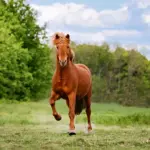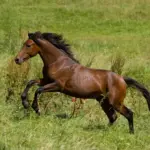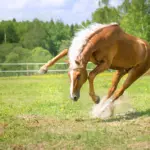Key Points at a Glance:
- Evolution on the steppes has shaped horse’s learning behaviour
- Learning begins from the very first hour of life within the herd
- Flexible adaptive behaviour shaped by horse’s nomadic lifestyle
- Living in a herd instils a strong social imprint
- Rapid learning as a survival strategy
From the steppe to the stable – an evolutionary legacy
The learning behaviour of our horses has been shaped over millions of years by their evolution as steppe dwellers. Unlike humans, who developed as omnivores in more sheltered environments, horses had to survive as herbivores in open landscapes. This demanded particular skills: whereas humans can take time to analyse situations and weigh different courses of action, horses must decide and act in a matter of seconds.
The herd as nature’s first classroom
Foals begin learning from the very first hour of life. Unlike human children, who take months to develop their first social interactions, a foal must immediately recognise its mother, follow her, and understand its place within the herd. This early social learning is vital for survival and shapes the way horses continue to learn throughout their lives.
In the herd, young horses learn through constant observation. They watch how experienced horses respond to danger, which plants are safe to eat, where secure resting spots are, and how social interactions work. This observational learning is far more pronounced than in humans, who acquire many skills through active experimentation and verbal instruction.
Nomads of the steppe – learning to adapt as a survival strategy
As nomadic animals, horses were forced to constantly adapt to new environments. Unlike humans, who can modify their surroundings, horses must learn to cope with the conditions they find themselves in. This necessity gave rise to a distinctive form of adaptive learning.
Wild horses travel long distances every day, encountering a variety of landscapes, weather conditions, and potential dangers. Every new situation must be assessed and understood immediately: Is this ground safe to walk on? Could a predator be hiding behind that bush? Is this unfamiliar plant edible? These questions have to be answered in an instant, without time for prolonged reflection.

© Adobe Stock / kwadrat70
In the herd, horses develop a complex system of social learning. Each member contributes to the collective knowledge. While humans often learn individually and share knowledge later, horses engage in a continuous, simultaneous learning process. The reaction of a single horse to a potential threat is immediately perceived by the entire herd and incorporated into the collective behavioural repertoire.
This social form of learning is so deeply ingrained that it continues to play a central role even in domesticated horses. A horse that perceives a new situation as threatening will instinctively observe the reactions of its companions. Calm behaviour from the other horses can have a reassuring effect and contribute to a positive learning experience.
Rapid learning as a survival advantage
The ability to learn immediately from individual experiences was crucial for the survival of horses. A horse that has once escaped a dangerous situation must remember that experience instantly and for the long term. This explains why horses often develop lasting avoidance behaviours after a single negative encounter – a mechanism that can be life-saving in the wild.
This rapid form of learning differs markedly from human learning, which often requires multiple repetitions and conscious processing. While humans learn through analysis and reflection, horses store their experiences directly in their emotional and procedural memory.
Relevance for modern training
Understanding these natural learning patterns is essential for effective training. By recognising that horses are naturally programmed to learn socially, we can work with this tendency. For example, an experienced horse can help a younger horse navigate new situations more confidently.
Equally important is understanding how directly horses link experiences. Unlike humans, who are used to abstract learning, horses require clear, immediate connections. A reward or correction must be given straight away, as horses can only associate events that occur in close temporal proximity.
These evolutionarily shaped learning patterns remain fully intact in modern domestic horses. By understanding and respecting these innate tendencies, we can design training that is both effective and aligned with the horse’s natural abilities.
- Fact Sheet: Myopathies - 29. August 2025
- Podcast #2 – Weaning Foals: Gentle, Stress-Free and Natural – How to Ensure a Healthy Start into Young Horse Life - 22. August 2025
- Feeding Senior Horses Properly: What Does an Older Horse Need? - 20. August 2025







